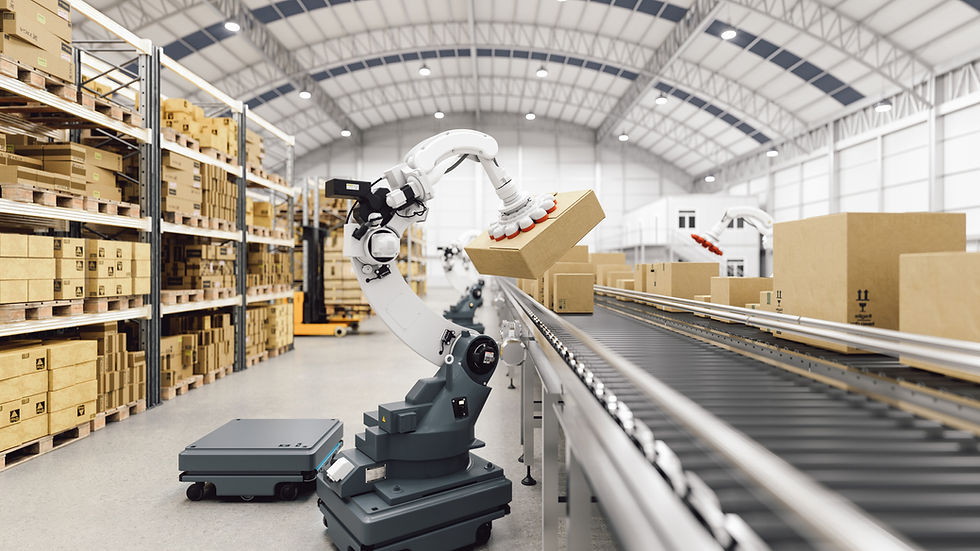Can You Use Amous in 50 Years: The Importance of Flexible Software Architecture
- Sofija E. Jiotis
- Sep 17
- 3 min read
Updated: Oct 15
2 minute read
Author: Sofija Jiotis
Logistics has never, and will never, be an industry of stability. With each rise of the sun comes novel struggles, needs, and technologies.
Through this lens, it seems impossible to compete. How can you effectively and efficiently function in such a volatile environment?
The answer is simple: adaptable TMS software.
TMS software is critical for managing transportation operations, carrier management, route optimization, freight auditing, and performance analytics. Without flexibility, however, a TMS program’s days are simply put, numbered. An effective TMS should be built to echo the ever-changing supply chain, providing ease and agility for your business. Flexibility in TMS architecture is no longer a luxury; it’s a necessity.

The Necessity of Flexibility-
Flexible architecture is essential to keep pace with the rapidly changing logistics landscape. Evolving consumer expectations, such as real-time tracking, predictive analytics, and dynamic pricing, require continuous innovation and adaptability. Regulatory shifts, inducing changes in customs documentation, emissions tracking, and compliance, must be implemented quickly to maintain operational integrity.
Flexible software allows for faster innovation cycles, enabling rapid testing and deployment of new features. This approach drives cost efficiency by eliminating the need for expensive replatforming. This architecture improves user experience through seamless updates, while futureproofing the platform.
Cornerstones of Flexible Architecture-
Legacy systems rely on hard-coded customizations. These are often challenging and expensive to change. Flexible TMS platforms support low/no-code tools and dynamic configurations, empowering businesses and users to mold the platform to their needs.
Much of this ease can be attributed to modular designs. These are software components that are developed, deployed, and upgraded independently, allowing for constant growth without extra effort. These updates are configured through cloud-native infrastructure, enabling scalability, greater uptime, and cost-effective upgrades.
Modular designs are inputted into microservices, which allow developers to isolate components for targeted enhancement without affecting the whole system.
A flexible architecture can handle surges in shipping volume, more users, and additional modules without degrading performance. These additions can range from machine learning to real-time driver tracking to ESG recording: the possibilities are limitless.
Modular and Microservice Architecture-
Modular and microservice architecture empower each core function —rating engine, dispatch, invoicing, etc.— to be deployed independently, promoting greater agility and efficiency. This decoupling ensures that individual services can be updated or replaced without rewriting the entire platform, significantly reducing development overhead.
This structure enables the implementation of DevOps pipelines for continuous integration and delivery, allowing new features and updates to be released. This architecture supports multitenancy for SaaS providers, enabling client-specific customizations without impacting the core codebase.
Cloud-Native Benefits-

Cloud-native architecture provides significant benefits by leveraging platforms (AWS, GCP, etc.) to calculate resources based on demand. This elasticity ensures that companies only pay for usage, avoiding costs associated with idle infrastructure. It also enables zero-downtime updates, allowing the deployment of new features and improvements without service interruption.
Compliance and Localization-
As global regulations and operational complexity evolve, security and compliance become all the more critical. Regulatory compliance calls for flexible systems equipped with real-time customs support and seamless cross-border integration. B
uilt-in language modules, tax calculation plugins, and local carrier integrations enable this support through easy deployment across new geographies.
Integration Ecosystems-
Integration readiness enables seamless connectivity with a broad range of tools and partners. A flexible architecture allows for plug-and-play integrations with minimal disruption, ensuring the platform can adapt as partner networks evolve.
Enabling AI integrations in a TMS platform depends heavily upon a flexible and event-driven architecture. To effectively embed AI models, the system must support dynamic data pipelines capable of funneling both structured and semi-structured data.
TMS Programs and The Future-
As supply chain volatility continues to accelerate, the need for adaptable and scalable TMS platforms becomes increasingly critical. Rigid, monolithic systems require costly replatforming, trapping users within a closed ecosystem; this is a risk today’s logistics leaders can no longer afford. Organizations that invest in modular and interoperable systems will gain a competitive advantage through greater compliance and communication.
The return on investment for flexible architecture is clear—enhanced longevity, improved user satisfaction, and the ability to continuously innovate. As the logistics space grows more digital and interconnected, flexible TMS platforms will soon outpace legacy systems. With TMS serving as the operational brain of the supply chain, its architecture must be as robust as the markets it supports.

Amous TMS provides this vigorous structure and so much more. Amous is the premier example of flexible TMS architecture, supporting over 180 integrations. This customizable workflow ensures the evolving demands of the supply chain are met. To build something that lasts, start with Amous TMS.




Comments